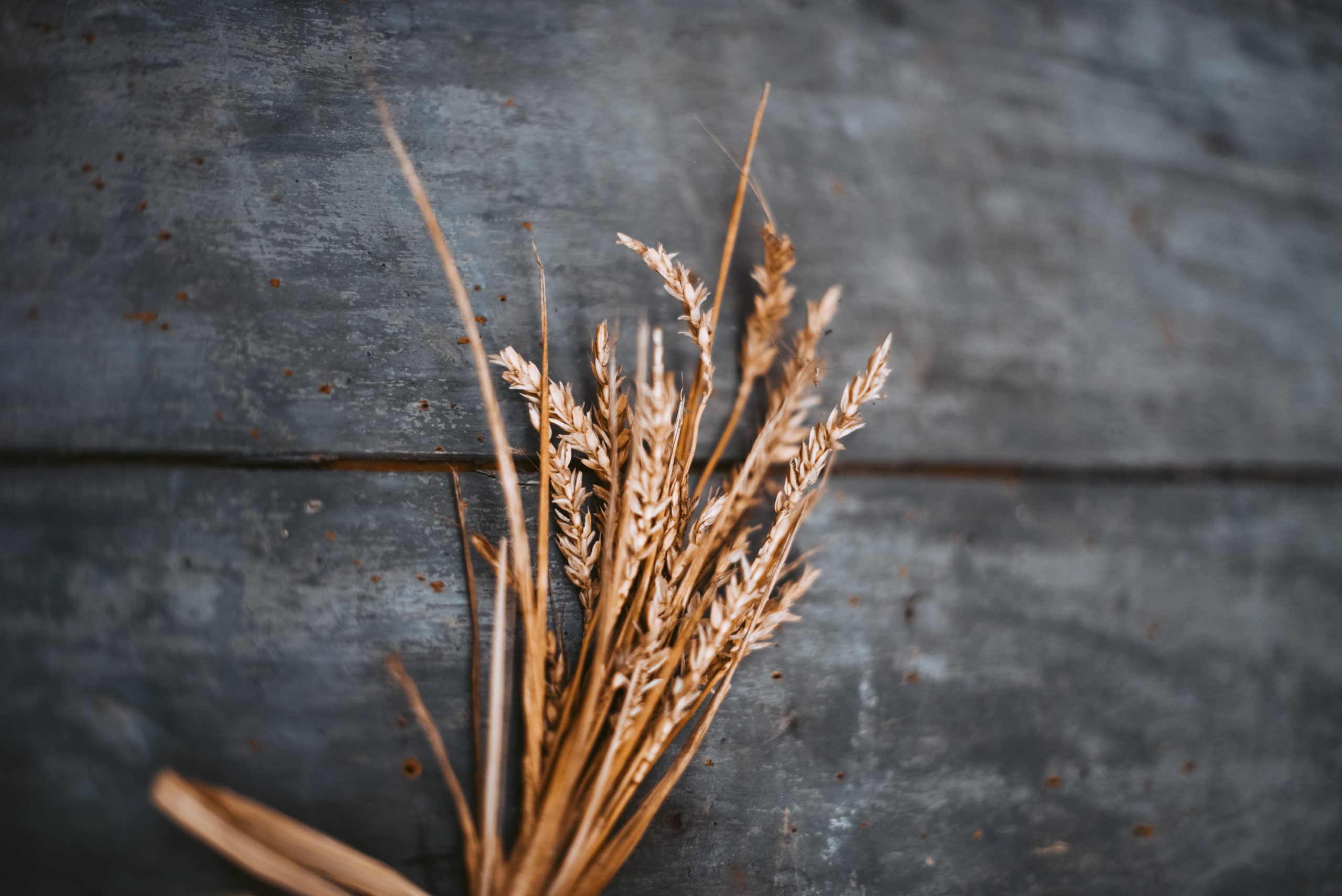Have you ever thought about growing grains, like wheat or rye, in your garden?
Often, when people plan out their gardens, common produce steals the spotlight: tomatoes, bell peppers, squash, and zucchini.
But what about grain?
Yes — really. You can grow grain in as little space as a row in your garden!
My own inspiration for growing grain took place a few years ago, when we met a family who attended our Sustainable Farm Conference. They had been mildly successful at growing grain for their off-the-grid homestead.
Their success made me want to do my own research on growing grain. We are determined to grow a small plot of grain this summer to see how much we can harvest. We want to challenge you to do the same!
In this post, we’re sharing with you 3 grains you can easily grow in your garden plot.
But first… let’s address the common misconceptions surrounding growing grains in your garden.
2 Common Misconceptions to Growing Grains on Your Homestead or in Backyard Garden Plot
There are two main misconceptions about growing grains in your homestead garden plot.
The first is that you need acres and acres of land to successfully produce enough grain to meet your family’s needs. Not true. In fact, just 1,000 square feet of wheat can produce enough grain to make 90 loaves of bread.
Cut that square footage in half, and you’re still looking at enough grain for a fresh loaf of bread nearly every week of the year. That’s more than enough grain for a family — and it doesn’t require much space at all.
Secondly, people believe that growing grains is beyond their gardening abilities. This, also, just isn’t true. Grains are actually quite hardy and don’t need a ton of attention for growing. Sure, the harvesting process involves a few more steps than, say, picking ripe tomatoes off the vine, but the results of your efforts are a healthier, better-for-you grain!
With nearly every USDA zone able to cultivate some sort of grain, there’s simply no reason NOT to at least give grains a go!
3 Grains You Can Grow on Your Homestead or in Your Backyard Garden
Wheat
Wheat is perhaps the most popular grain, and likely the one you’re already using the most in the kitchen. What if you could enjoy wheat harvest right from your own garden?
Not all wheat is created equal. There’s winter wheat and spring wheat. Winter wheat is planted in the fall and harvest from early-to-mid summer (depending on what zone you live in), while spring wheat is planted in the spring and harvested in the fall.
You then have different varieties, like soft wheat, hard wheat, and durum wheat, with each type of wheat used for different means, like pastries (soft wheat), pastas (durum wheat), and breads (hard wheat). Your growing zone will dictate which varieties to choose; as always, we recommend consulting with your local Ag extension, who will be able to point you in the right direction.
Wheat likes to be planted directly into the soil as seeds. You’ll want to generously broadcast your wheat seeds over the plot of soil you’ve dedicated to wheat. This video offers a great visual example of how to do this — as well as additional how-tos for growing your own wheat.
From seed to harvest, wheat typically takes about 7 – 8 months to reach maturity. Unlike fruits or vegetables where harvesting is as simple as picking the produce straight off the stalk, wheat takes a bit more effort.
You’ll need to harvest, bind, cure, thresh, and winnow your wheat before it’s time to store and grind it into flours. This article offers a brief overview of the different steps of wheat harvest.
Rye
Some people grow rye as a cover crop, but we think you should consider growing rye for harvest purposes, too.
Rye requires much of the same attention as wheat, only it’s a cool-weather cereal grain that can grow in poor soil and tolerate colder temperatures — great for those of you who live in colder climates! In fact, rye can even germinate in temperatures as low as 34° F, making it one of the hardiest — and easiest — grains to grow.
Learn more about growing rye here.
Oats
Like rye, oats can be used as a cover crop, but we don’t think you should stop there: oats are an easy grain to grow in the garden!
Oats are another cool-weather grain that germinates in low temperatures, so plan to plant these in spring or fall. They can adapt to most soils, though waterlogged soil is a big no-no; make sure there is plenty of drainage. Like other grains, you’ll want to broadcast oat seats directly into the soil.
To harvest, oats will also need to be threshed and winnowed like other grains. This article offers deeper details for growing oats in your own backyard.
Local to Middle Tennessee?
Learn how to make your own whole grain bread!
Join us on Saturday, February 12, 2022 at 10 AM CST right here at Stoney Creek Farm in Franklin, TN to learn how to make your own delicious whole grain bread.
We all know that whole grains can be good for us, but that’s not the only reason to eat them — with the right recipes and techniques, they can taste great, too!
This hearty whole grain bread is a healthy and delicious alternative to packaged supermarket bread. The seeds and different types of flour add flavor, texture, and fiber to make for a filling, satisfying loaf that is great for sandwiches or to go with salads.
In this class, instructor and longtime breadmaker Judy Felts will teach you how to make your own healthy, homemade whole-grain bread. You’ll leave the class equipped to begin your own breadmaking journey at home!


